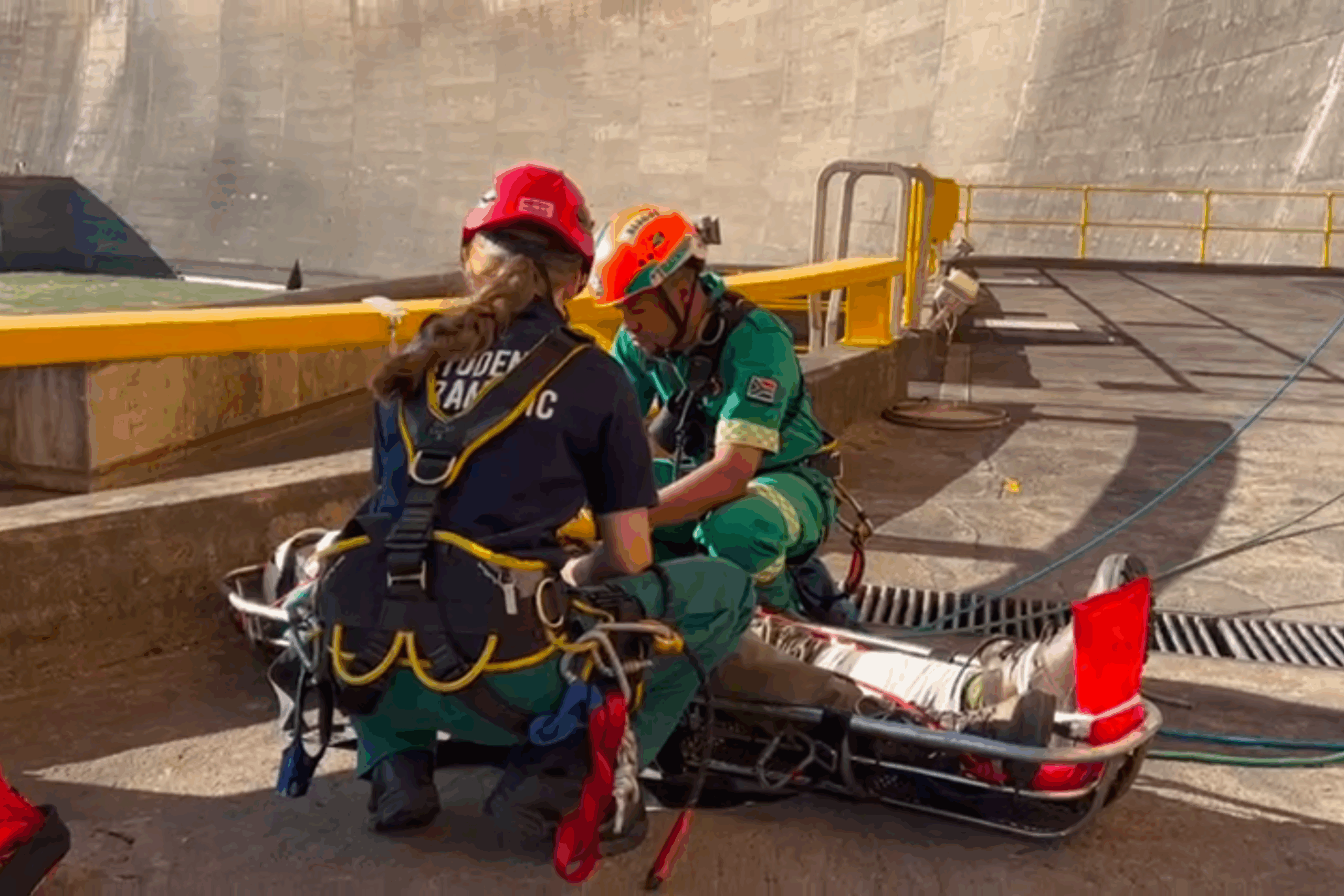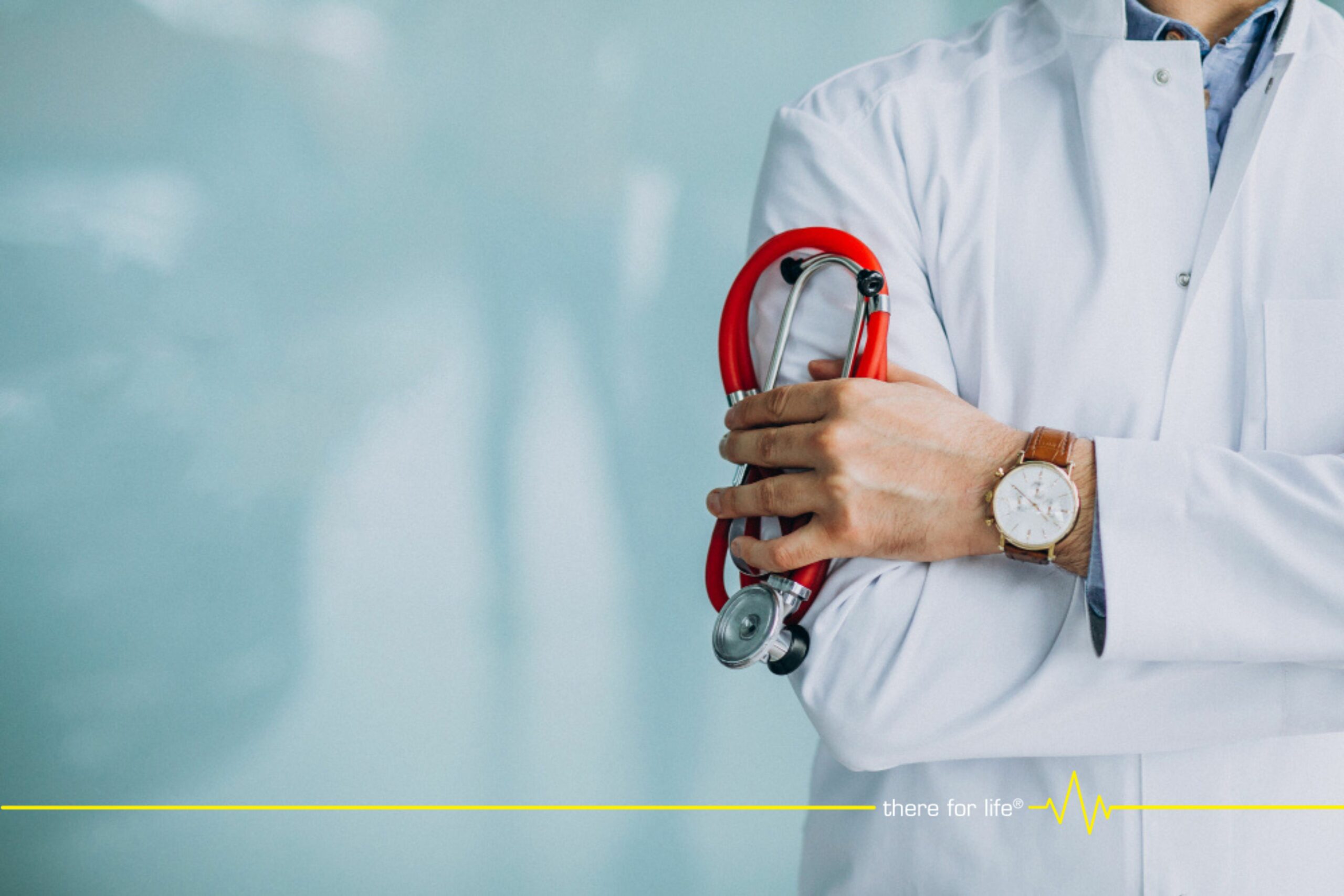On greenfield projects in Africa, where access to medical facilities and emergency services may be limited, it is crucial to have medical and rescue capabilities on-site. This involves establishing well-equipped healthcare facilities, training personnel in emergency response procedures, and ensuring the presence of rescue teams. These measures are of utmost importance as they not only promote the health and well-being of the workforce as well as contribute to the overall success of the greenfield project by minimising risks and potential disruptions. Effective medical and rescue solutions play a significant role in safeguarding both human lives and the success of greenfield projects. The significance of these essential services will be examined below.

Understanding the Risks in Greenfield Projects
Greenfield projects are defined as new projects or initiatives set up in areas that have not been previously utilised or developed. In construction and industrial development, a greenfield project involves starting from the beginning on a fresh location instead of repurposing an existing one. Although these projects provide prospects for success, they also come with inherent risks and challenges, especially where access to medical and rescue services is concerned. These risks and challenges include:
- Limited Healthcare Infrastructure – Greenfield projects often occur in remote or underserved areas with limited healthcare infrastructure. Establishing medical facilities from scratch can be challenging, requiring substantial investment and planning.
- Access to Skilled Healthcare Professionals – Recruiting and retaining skilled healthcare professionals may be challenging in remote areas. Limited access to qualified doctors, nurses, and other healthcare staff can impact the quality of medical services provided to employees.
- Logistical Challenges – Remote locations may lack proper transportation and logistics infrastructure, making transporting medical supplies, equipment, and personnel difficult. This can result in delays in providing timely medical care.
- Healthcare Regulations and Compliance – Many African countries have diverse healthcare regulations and compliance requirements. Adhering to these regulations while setting up medical facilities and providing services can be complex and time-consuming.
- Disease and Health Risks – Greenfield projects in certain regions may expose employees to specific health risks, such as tropical diseases. Developing and implementing health programs to prevent, detect, and manage these risks is essential.
- Emergency Response Planning – Establishing emergency response plans for medical situations, accidents, or outbreaks becomes crucial in areas where access to immediate healthcare may be limited. Evacuation plans and communication strategies must be well-defined and practiced.
There are a number of risks associated with ensuring the health and well-being of employees on greenfield project sites. To ensure that these risks are managed, a Proactive Risk Management approach needs to be in place.
Proactive Risk Management
Proactive Risk Management is essential to ensure employees working on remote greenfield project sites in Africa can access the right medical services. These projects, often located in isolated and challenging environments, pose unique health risks that must be addressed to safeguard the workforce’s well-being.
The geographical isolation of greenfield project sites in Africa presents additional difficulties in accessing medical facilities. These remote locations often lack nearby hospitals or clinics, making it crucial to foresee and address potential health risks by establishing comprehensive medical support systems ahead of time.
Proactive Risk Management entails recognising these possible challenges and taking steps to overcome them, such as establishing on-site medical facilities or ensuring reliable transportation to nearby healthcare centres.
Employees working on greenfield projects in Africa may face various health risks due to unfamiliar and diverse environments, such as tropical diseases, encounters with wildlife, and extreme weather conditions. It is essential to take a proactive approach by conducting comprehensive risk assessments and implementing preventive measures to address these risks. These measures may include providing necessary vaccinations, offering training, and equipping employees with protective gear.
Cultural and logistical considerations add another layer of complexity to greenfield projects. Proactive Risk Management involves understanding the local healthcare infrastructure and collaborating with relevant authorities and healthcare providers. This ensures employees receive culturally sensitive and timely medical care, overcoming potential language barriers and logistical challenges.
In remote greenfield projects, where medical emergencies can escalate rapidly, proactive risk mitigation strategies are critical. This may involve developing emergency response plans, training on-site personnel in rescue operations, building healthcare facilities, medical staffing, establishing communication protocols for swift medical evacuation if necessary and more. These measures are essential for minimising response times and ensuring employees receive timely and adequate medical attention.
From the above, it is clear that Proactive Risk Management plays a vital role in mitigating the risks associated with providing healthcare services on greenfield project sites, as it allows organisations to anticipate and address potential risks before they become serious issues. By doing so, the health and well-being of the workforce can be protected, and the project’s overall success can be enhanced. One of the key elements of Proactive Risk Management is having the right medical and rescue solutions on-site. Let’s examine the role of total medical and rescue solutions on greenfield project sites.

The Role of Total Medical and Rescue Solutions
Total Medical and Rescue Solutions are crucial in ensuring the health of employees working on greenfield project sites in Africa. These roles are broken down below:
Emergency Medical Response:
- Immediate Care: Total Medical and Rescue Solutions provides rapid and efficient emergency medical response in case of accidents, injuries, or medical emergencies on the project site.
- Medical and Trauma Care: Trained medical professionals are equipped to administer medical and trauma care to stabilise patients before transporting them to a medical facility.
Medical Facilities:
- On-Site Clinics: Total medical and rescue solutions may establish on-site clinics to provide employees with routine medical services, health check-ups, and preventive care for employees.
- Medical Infrastructure: They ensure the availability of medical facilities and equipment necessary for immediate medical attention and treatment.
Evacuation and Transportation:
- Emergency Vehicle and Aeromedical Services: Total Medical and Rescue Solutions manages and provides emergency vehicle and aeromedical services to rapidly evacuate injured or ill employees to the nearest medical facility.
- Coordination with Hospitals: Part of this solution is establishing protocols for efficient communication and coordination with local hospitals to ensure a smooth transition of patients from the project site to advanced medical facilities.
Occupational Health:
- Health Surveillance: Conducting health assessments and monitoring the health status of employees to identify and address potential occupational health hazards.
- Health Training: Providing training programs to educate employees on health measures, emergency response procedures, and the proper use of equipment.
Risk Assessment and Planning:
- Preventive Measures: Conducting risk assessments to identify potential hazards and implementing preventive measures to minimise the risk of accidents or health issues.
- Emergency Preparedness: Developing and implementing emergency response plans to ensure a coordinated and effective response in the event of an emergency.
Community Engagement:
- Local Collaboration: Collaborating with local communities and healthcare providers to build a network of support and resources for both on-site and off-site medical needs.
- Health Education: Engaging with local communities to provide health education, promote disease prevention, and address community health concerns.
Compliance and Regulatory Adherence:
- Regulatory Compliance: Ensuring all medical and rescue operations comply with local and international health and safety regulations.
- Documentation and Reporting: Maintaining accurate records, documenting incidents, and reporting to relevant authorities as required by regulations.
Continuous Improvement:
- Feedback Mechanism: Feedback mechanisms to continuously improve medical and rescue services based on lessons learned from incidents and employee feedback.
Total medical and rescue solutions play an essential role in ensuring the health and well-being of all employees on-site. How do multinational corporations ensure they have the right total medical and rescue solutions in place? The answer lies in choosing an experienced total medical and rescue solutions provider like ATA International Holdings.
ATA International Holdings, also known as ATA International, is a leader in medical, emergency, rescue, occupational healthcare and training solutions across Africa and provides multinational corporations with several onsite healthcare-related services, including medical staffing, medical supplies procurement, evacuation, accredited medical, emergency and rescue training, topside support, employee assistance programs, occupational health services and more. ATA International has extensive experience working in Africa and has worked across 36 of the 54 countries to date. Over and above this, the business provides comprehensive turnkey medical and rescue solutions that aim to help you control the risks associated with having employees work on greenfield projects in Africa and ensure your employees have access to high-quality medical care.
Conclusion
Ensuring effective management and reduction of risks in greenfield projects, especially in the implementation of medical and rescue solutions, is crucial for the overall success and sustainability of the project. The nature of these projects required a proactive approach that incorporates thorough risk assessments, strong contingency plans, and ongoing monitoring. By prioritising the health and well-being of employees through the integration of advanced medical and rescue solutions, such as those provided by ATA International, organisations can ensure accessibility to quality medical services. To find out more information on this subject and to ensure you have the right medical and rescue solutions in place, download our Greenfields project guide.


